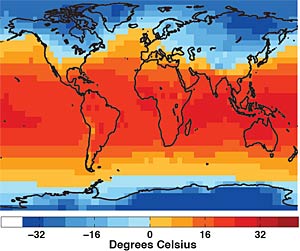Yes youall know that I am a google whore, but heh this year is on a roll. Martin Luther King’s Birthday in the same week that an African American is sworn in as President. Lincoln’s 200th Birthday in the same week as Valentine’s Days 600th Birthday. It’s true Valentine’s Day was invented by Gregory Chaucer 8 years after his likely death. Your first Romantic Blog is all about financial love. Ignore the buff guys name:
How Electricity Should Be Priced – Proportional to Use
Here’s a very bold idea on how electricity should be priced that I believe could completely change the world in several positive ways.
It would be the first, global, progressive pricing scheme that would give “life-line” like service to all in need of the freedom and convenience of basic electricity. Second, it would, at the same time, provide the incentive for renewable energy to blossom, in an extremely fair and global way.
The idea is this – take the lowest possible electricity price anywhere on the planet, about $0.03 per kilolwatt hour, and offer that rate to everyone on the planet, for their first kilowatt hour (per month, per person). For each doubling of usage, increase the rate $0.01. So if you use 2 kilowatt hours per month, your rate is $0.04. For 4 kilowatt hours per month, per person, your rate is $0.05.
:}
This collection of “alternative energy” was a lot like love, starting fast and quickly dieing down:
http://www.bioeconomyblog.blogspot.com/
Thursday, May 31, 2007
Launch of the AlternativeEnergyBlogs
AlternativeEnergyBlogs is a gateway to the following Alternative Energy Blogs:
The Bioeconomy Blog
The Bioeconomy Blog is devoted to the promotion of all key literature relating to biorenewable fuels, most notably bioethanol and biodiesel. It will focus on the economic, environmental, medical, political, and social aspects of bioeconomy initiatives. The Bioeconomy Blog is a companion to the The Bioenergy Blog, which is devoted to the technical aspects and technologies associated with production.
[http://www.bioeconomyblog.blogspot.com/]
Facebook Group
[http://iastate.facebook.com/group.php?gid=2350983131]
The Bioenergy Blog
is devoted to the documentation of key literature relating to biorenewable fuels, most notably bioethanol and biodiesel. It is focused on the technical aspects and technologies associated with the production of these fuels. The Bioenergy Blog is a companion blog to The Bioeconomy Blog, which is focused on the non-technical aspects of bio-based fuels.
[http://thebioenergyblog.blogspot.com/]
Facebook Group
[http://iastate.facebook.com/group.php?gid=2363348674]
:}
This Blog reminds me of the J. Geils Band’s take on love…but is that Love Stinks or Whammer Jammer baby!
http://enviropundit.blogspot.com/
Bà R?a-V?ng Tàu: ?? lén 20 t?n ch?t th?i nguy h?i ra ??ng ru?ng
L??ng ch?t th?i này d?ng b?t có nhi?u màu xanh, vàng, ??, ?en… khác nhau ???c ?óng trong thùng phuy. Ông Tr?n Ti?n D?ng, chuyên viên Chi c?c B?o v? môi tr??ng t?nh BR-VT, cho bi?t ?ây là lo?i ch?t th?i nguy h?i, có kh? n?ng gây nguy hi?m cho môi tr??ng n??c và không khí xung quanh. Hi?n ??n v? này ?ã l?y m?u g?i xét nghi?m.
Ng??i dân t?i ?ây cho bi?t kho?ng 20 gi? ngày 7-11, có b?n xe ?ông l?nh và m?t ôtô mang bi?n s? TP.HCM ch?y ??n khu v?c này, ?? l?i các thùng phuy này r?i b? ?i. Trên thân nhi?u thùng phuy v?n còn ghi Nhà máy d?t Th?ng L?i TP.HCM. Phòng C?nh sát môi tr??ng Công an t?nh BR-VT ?ã vào cu?c ?? ?i?u tra v? vi?c.
:}
As if you could tell right? Love can be all over the map. Sunny, rainy, warm and cold on the same day. Much like this last Blog for the day:
http://entropyproduction.blogspot.com/
Misplaced Priorities
So the Securities Exchange Commission is said to be probing Apple over accusations that they may have misled the public over the state of Steve Jobs’ health.
Let’s play a word association game:
Pancreatic cancer
+
Corporate executive
=
?Healthy?
One can imagine that if Jobs had cancer in the Islets of Langerhans, the portion of the pancreas responsible for insulin regulation, that yes, he might have some diabetic-like health issues associated with that. Doesn’t the SEC have something better to do? E.g. meanwhile we learn that Merrill-Lynch maneuvered to deliver $3 billion inbonuses before being bought-out by Bank of America. Merrill-Lynch lost over $20 billion in that quarter, and BoA is demanding that it be bailed out by the US taxpayer now for the same amount. This idea that financial companies need to pay out bonuses to retain “top talent” during a period when the financial sector is undergoing a severe contraction is a canard. Where are they going to go work, the construction industry?
:}



 Febuary
Febuary


